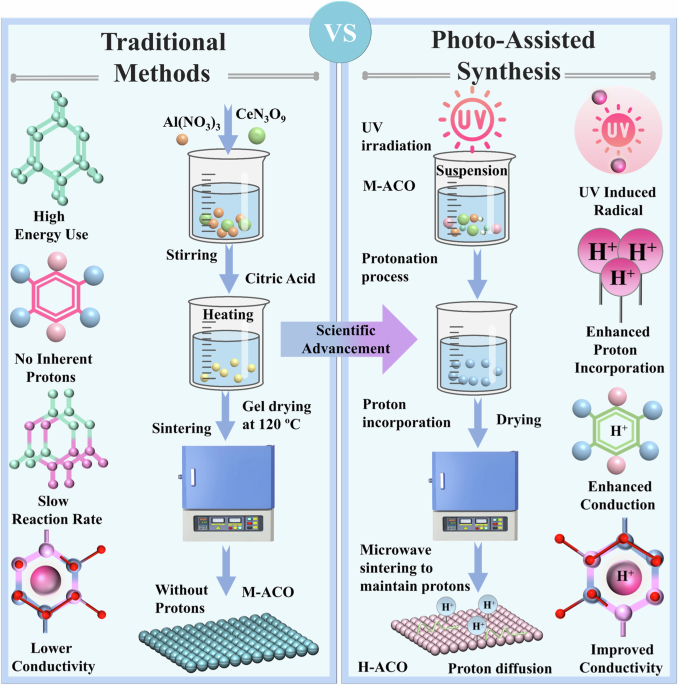Revolutionizing Protonic Ceramics: Photo-Assisted Synthesis for Enhanced Proton Conductivity
Key Ideas
- Protonic ceramics like perovskite oxides play a crucial role in various electrochemical processes and energy technologies.
- Traditional synthesis methods face challenges in native proton containment and conductivity, prompting the need for innovative approaches.
- Recent advancements in synthesis, including microwave sintering and spark plasma sintering, aim to enhance proton conductivity and structural stability at lower temperatures.
- The introduction of photo-assisted protonation, combining microwave synthesis and UV light irradiation, has shown promising results by significantly improving proton conductivity in ceramic oxides.
Protonic ceramics are essential for multiple electrochemical processes, including hydrogen production and energy storage. Commonly used materials like proton-conducting perovskite oxides face challenges such as non-native proton containment and limited conductivity, necessitating innovative synthesis techniques. Recent advancements like microwave sintering and spark plasma sintering aim to address these issues by enhancing proton conductivity at lower temperatures. The development of a paradigm-changing synthesis technique called photo-assisted protonation shows great promise. This method combines microwave synthesis for structural preparation with UV light irradiation to facilitate proton incorporation in ceramic oxides. The radical-mediated process enables substantial native proton incorporation, resulting in excellent proton conductivity. The photo-assisted synthesis approach offers a transformative solution by directly facilitating proton incorporation, leading to enhanced fuel cell performance. This technique has the potential to revolutionize the development of proton-conducting oxide systems and fuel cell technologies, paving the way for advanced applications in the future. Experimentally, the comparison between traditional synthesis methods and the photo-assisted approach highlights the significant improvements in proton conductivity achieved through the innovative synthesis technique.
Topics
Fuel Cells
Energy Storage
Fuel Cell Technology
Proton Conductivity
Electrochemical Processes
Ceramic Oxides
Synthesis Techniques
Latest News
